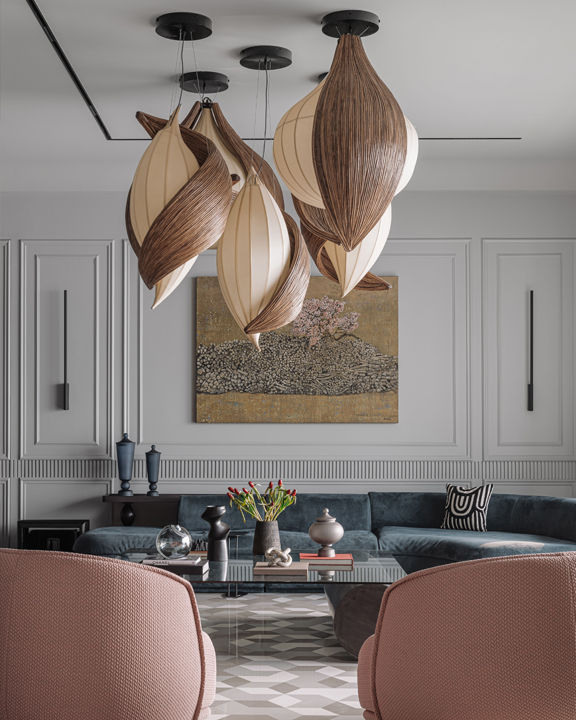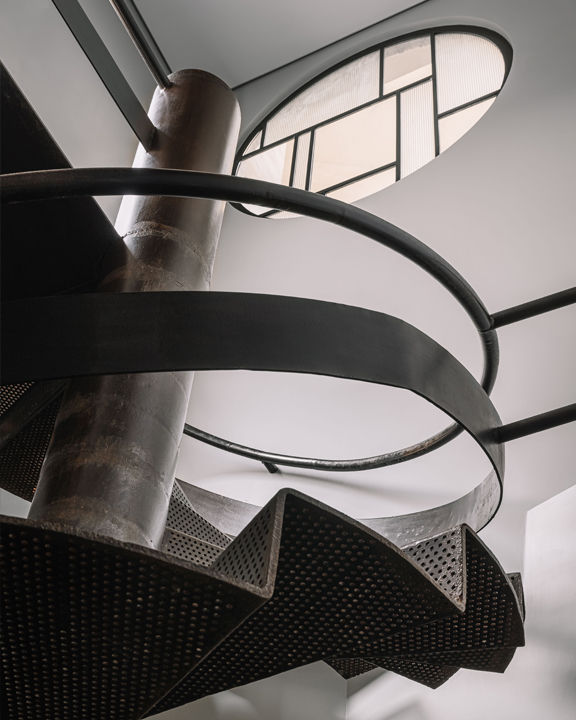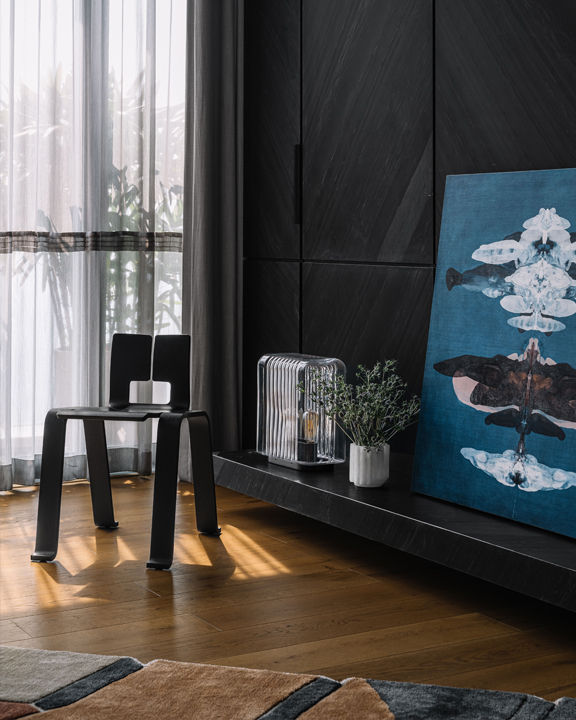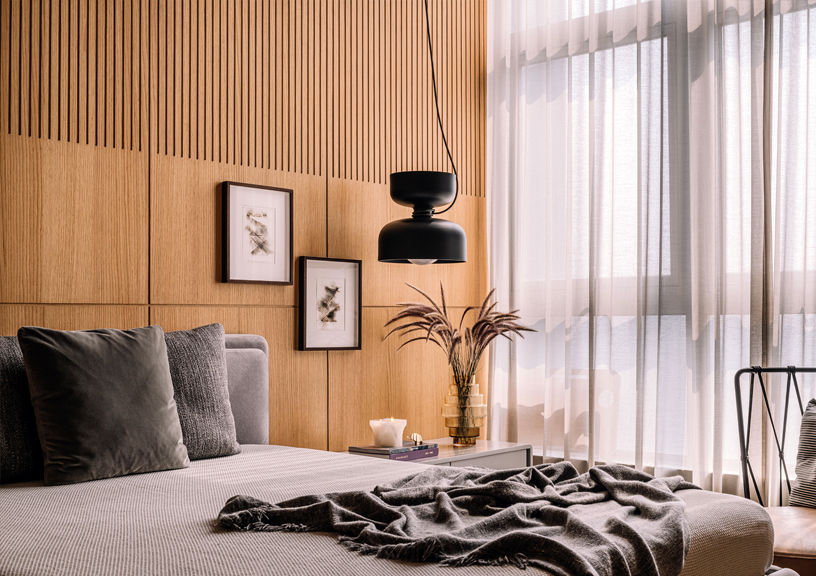It’s a Monday morning in South Mumbai, and as we step into the reD Architects office, the space hums with quiet intensity. Located just minutes from the sea link, the office welcomes us with its signature arches, an open floor plan, and the understated elegance of clean lines. The energy is palpable—the team of over 50 is already in full swing, heads bent in deep concentration. It’s a space where creativity and precision coexist seamlessly, much like the designs reD Architects is renowned for.

Amidst this hive of activity, tucked into a quieter corner, we find the trio at the heart of it all: Rajiv Parekh, Ekta Puri, and Maithili Raut. Their camaraderie is immediately striking—every conversation, every glance, a reflection of their seamless partnership and shared vision. They don’t need to finish each other’s sentences; the unspoken understanding that comes from years of collaboration fills in the gaps. Rajiv, with his sharp eye for detail honed at Pratt, exudes a quiet confidence that mirrors his poised presence. Maithili, evercharming and effortlessly personable, brings a vibrant energy to the room, her infectious laughter punctuating the space as she jokingly reveals her unease with cameras—“Photography is more my thing,” she quips. And then there’s Ekta, moving in and out of her cabin with an ease that belies the creative chaos within. A punching bag—unexpected but delightfully fitting—rests in the corner of her workspace, a playful reminder of her kickboxing days.
The office itself feels like an extension of their ethos—every inch thoughtfully curated, every design detail deliberate. It’s not merely an office; it’s a reflection of their belief that true luxury is found in the balance between form and function. The coffee, brewed from a sleek DeLonghi machine, lingers on the palate, much like the experience of stepping into one of their projects—crafted with precision, yet infused with warmth and personality. Indian design accents are thoughtfully placed, grounding the modern aesthetics in a rich cultural narrative, quietly reinforcing their approach to luxury. Here, design isn’t just about creating something beautiful; it’s about crafting something meaningful.
As we settle into conversation, their vision of luxury unfolds. It’s not about opulence or showmanship—it’s about intention. It’s about creating spaces that speak to the people who inhabit them. For Rajiv, Ekta, and Maithili, luxury is a deeply personal concept, rooted in the marriage of aesthetics and functionality, and driven by the emotional connections they forge between their clients and the spaces they design.

Excerpts from the interview…
What does a typical workday look like for each of you?
Rajiv: Mine starts pretty early in the morning. We work out, hang with the kids for an hour and a half, then we have a cup of coffee together before diving into work. It’s a routine that helps me stay grounded.
Ekta: Typical? I don’t think we have such a thing! (laughs) Honestly, the only thing that’s consistent is Monday Monday is the start of the week. From there, anything can happen. It’s firefighting, fun, meetings, sometimes chaos… you know, the usual!
Maithili: I agree, there’s no such thing as a typical workday here. Like Rajiv and Ekta, I start early too, with some family time and a strong cup of coffee. Then, it’s straight into the day. The mornings usually set the pace for what’s to come, and I try to keep them productive and dynamic.
Tell me about your workspaces. How do they reflect your personal tastes and personalities?
Rajiv: My workspace has a big interactive screen that I’m always using to sketch and engage with ideas. There’s a really interesting artwork behind me by Kunal Naik—a face with six hands. The face is calm, and it’s surrounded by this chaos of multitasking hands. That’s pretty much me—doing multiple things but staying calm through it all. I usually have two devices open at once because I’m juggling a lot, and there are always about five or six people coming in and out, asking for answers. But that chaos is what I thrive on.
Maithili: I like things smaller in scale. My workspace is intimate. It’s like a cocoon for me, filled with books, beautiful objects, and samples—things I love. It’s where I take refuge when I need to focus. It’s not a big space, and honestly, there’s not a lot of room for people to stand around. It’s very much my own. But I do have a courtyard right outside, so I get this lovely peek at the outside world when I need a bit of inspiration.
Ekta: Mine is completely different. There’s no window—it’s dark, quiet, and I love it like that. It lets me focus and just channel my energy inwards. If you walked into my cabin, you’d probably say it’s chaotic because there are things everywhere—stuff I’ve picked up from my travels, objects I’ve collected over time. But for me, it’s a cocoon of creativity. In that chaos, I find my focus. That’s just the way I function.

Do you have any special knick-knacks or collectibles that are part of your workspace and hold significance to you?
Rajiv: Oh yes! For my 40th birthday, Ekta gave me this amazing frame filled with my ‘firsts’—like my first metro card, my first debit card from the US, my first Broadway ticket, even my first gym membership. It’s this wonderful collage of memories, and I love looking at it. It’s so meaningful.
Maithili: In my workspace, I have a figurine of my daughter, standing in the pose of a metric man. It’s inspired by Le Corbusier’s Modular system, where he used human proportions to guide his architectural designs. But instead of the classic Modular figure, I’ve got my daughter’s silhouette. It’s a personal version of Corbusier’s philosophy—my own take on proportions and scale, but with a family touch. It’s functional too; it helps me with scale when I’m designing. It’s one of those pieces that keeps me connected to both design principles and my personal life. And that figurine really represents that balance—function and heart in one piece. I love it. Yeah, exactly! It’s like Corbusier’s influence, but deeply personal to me. It’s not just about design; it’s also a reminder of what matters most to me.
Ekta: For me, I have a boxing bag in my workspace! (laughs) I used to train in kickboxing, so it’s there for when I need to blow off some steam. I don’t train as much anymore, but the bag stays as a bit of a reminder of that part of my life.

How do each of you define luxury? What does it mean to you?
Rajiv: For me, luxury is all about choice. It’s not just about having expensive things. It’s about having the space, both physically and mentally, to make your own decisions, to live life on your own terms. That’s a privilege. Being able to choose what matters to you—that’s the real luxury.
Ekta: Yeah, luxury is very personal. It’s all about creating something that speaks to the individual. Some people might define luxury as time with family, while others might prioritise fitness or entertainment. It’s about fulfilling those unique needs and preferences.
Maithili: Absolutely. It’s about thoughtful design that caters to someone’s specific desires. It doesn’t have to be extravagant or over the top. It just needs to be meaningful and special to the person experiencing it.

What’s the most extravagant feature you’ve ever incorporated into a design?
Rajiv: We recently created an 18-by-18-foot hydraulic platform for a client. The space was smaller, but the client had this dream of what they wanted the space to do for them—a multitude of things. So, we had to come up with a solution that allowed the space to be multifunctional. This platform moves up and down, creating different spaces at different heights. It functions as an entertainment space, a lounge, even a corporate meeting area at different levels. It wasn’t cheap to build, and it took about six months of trial and error, but it was worth it. We used hydraulic elevator components and added stainless steel cables for safety, making sure that if the machinery failed, the platform wouldn’t. When you compare the cost to buying additional square footage in a city like Mumbai, it was value for money. It wasn’t extravagant; it was just smart design.
Ekta: For me, it was the Library House project. There’s a pool in the middle of the house, with a den on one side and the living room on the other. We didn’t want to separate the spaces with a sliding door because that would have taken away from the openness. So, we designed a custom door that lifts instead of slides, creating this seamless transition. It was a challenge to get it right, but it worked beautifully. When the door lifts, it provides shade over the pool deck and creates this stunning, open flow between the spaces.

What trends have you noticed in terms of bespoke or limitededition furniture and art?
Rajiv: We’re seeing a huge shift toward bespoke, artisanal pieces. People want something unique, something that tells a story. We collaborate with friends and colleagues—like Rooshad’s benches, Ravi’s centre tables, and Nishita’s swings—to create pieces that are not just functional, but personal and meaningful.
Ekta: Clients now want to know the story behind the piece. It’s not enough to have something beautiful—they want to know who made it, what inspired it, and how it was crafted. That connection to the maker has become a big part of what clients consider luxury.
Maithili: And as designers, it’s our role to encourage that. We show clients the value of choosing something made by an artisan, rather than opting for a mass-produced item. There’s so much more meaning in a piece when it’s created specifically for a space, with care and intention.
Rajiv: We also make it a point to avoid imitation. If a client wants something similar to what they’ve seen elsewhere, we say, ‘Let’s call the original designer and collaborate.’ It’s about respecting creativity. There’s already enough copying happening in the world—we don’t need to add to it.
Ekta: Yeah, and if you want to take inspiration, just reach out to the original designer. Most of the time, they’re happy to collaborate. It’s about fostering a community where we support each other’s creativity.
Maithili: Exactly. There’s a kind of luxury in knowing that your space is filled with pieces that are one-of-a-kind, crafted with care by people who are passionate about what they do. It’s about respecting the craft and creating something that’s truly yours.

How have you seen clients’ perception of luxury evolve over the years?
Rajiv: It’s changed so much. There was a time when people would come in and say, ‘I want a house like this one you did for someone else.’ Now, they’re much clearer about what they want. They might like something we’ve done before, but they’ll say, ‘I want that, but I want it tailored to me.’ Clients have become more self-aware, and they want spaces that reflect their individuality. We collaborate with so many talented designers, like Rooshad’s benches, Ravi’s centre tables, and Nishita’s swings. These aren’t just functional pieces; they carry personal significance, both for us and the clients.
Maithili: Exactly. They no longer want a replica of someone else’s home. They want something that feels personal, that truly reflects their own tastes and lifestyle. We’ve noticed a real shift in the last few years, where clients are not afraid to break away from trends or standard ideas of luxury. Instead, they are looking for something that is deeply personal to them.
Rajiv: And for us, it means we have to get to know our clients much more intimately. We spend a lot of time understanding their personalities, their quirks, and what drives them. We love encouraging our clients to embrace their uniqueness and tell us what they really want—even if it seems out of the box. That’s what makes the design process exciting, and it ensures their homes feel uniquely theirs.
Ekta: Absolutely. Clients are much more confident now in expressing their desires, and that means they’re more willing to let go of what others are doing. It’s become less about keeping up with trends and more about creating a space that reflects their personal happiness.
Rajiv: Post-COVID, people have also realised how precious time is. They’re no longer interested in just filling their homes with things for the sake of it. They want spaces that allow them to relax, unwind, and truly enjoy their time at home. That’s one of the biggest changes we’ve seen in how people approach luxury—they’re optimising their spaces for personal freedom and downtime.
For the full interview, subscribe to A+D! or grab a copy of our October 2024 from the stands!
